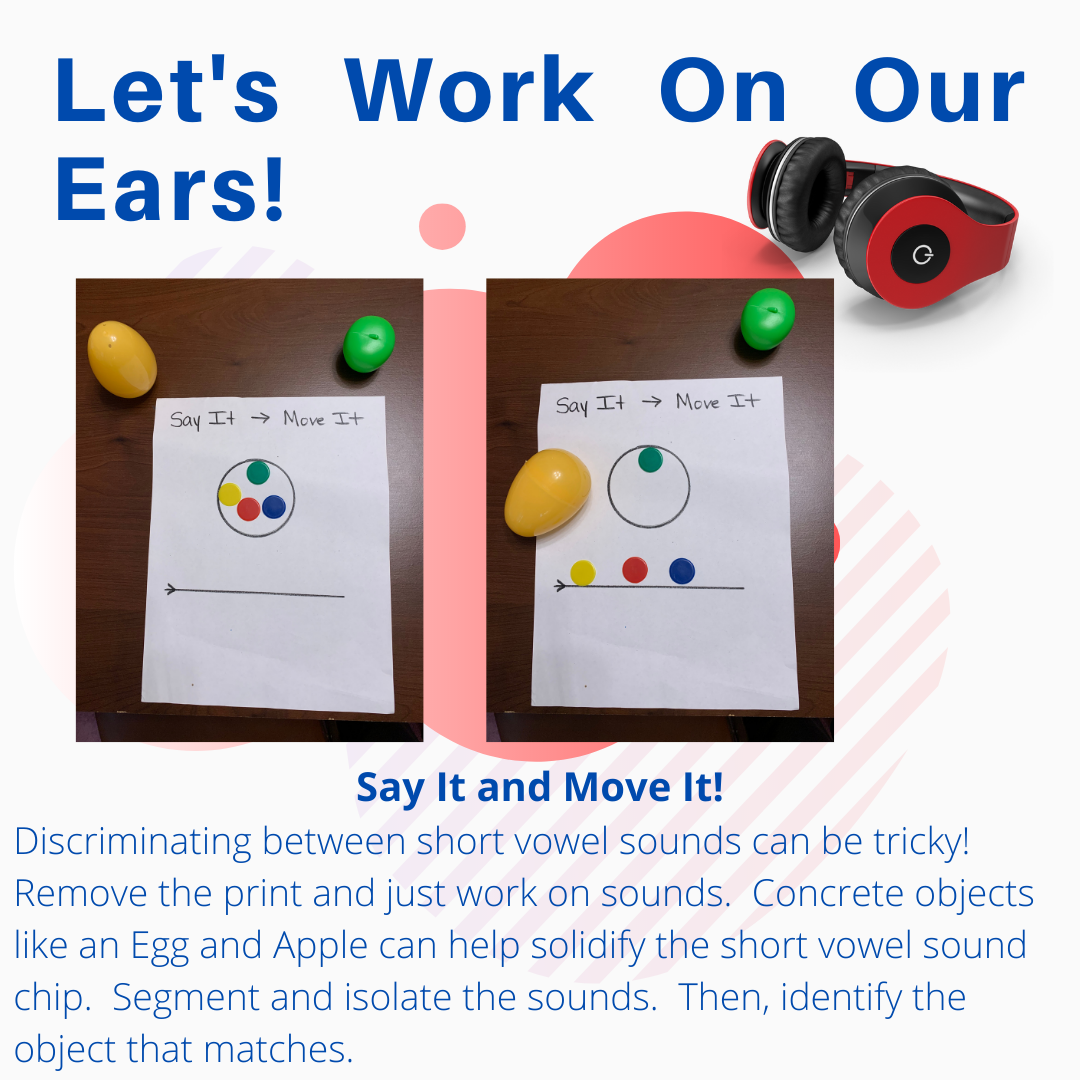|
Early emergent readers are attaching a visual images or letters, to the sounds in a word. If you think about how your toddler began to speak, his or her first words attached to something visual that held meaning to them. The toddler heard an utterance that connected to the image and learned the connection. Early readers are doing the same thing. They are attaching speech to print.
One key to developing reading skills is the discrimination and manipulation of sounds. Your toddler and early reader will benefit from rhyme and rhythm in songs and conversation. The song, "Down By The Bay," gives you the chance to say an animal and your child to give a rhyming ending to the verse. "Have you ever seen a goat in a _______? Down by the bay." Fun for car rides, too! Short vowel sounds can be fun to play with, especially when there is a manipulative to add to the exercise. In the picture below, we are just concentrating on the sound in the middle of the word. But, first we pull down a chip for each sound, segmenting one sound at a time. Then, tap the middle sound. Say just that sound. Tap the plastic egg or the plastic apple. Which one matches that middle sound? We work on just the sounds, no printed letters are needed. This practice exercises a skill called phonological awareness, a critical foundation in the development of word recognition skills.
1 Comment
What are the causes of reading difficulties? I know from speaking with several parents who have asked this very question, that at the heart of the question is "Have I done something wrong because my child has trouble reading?" Honestly, I share that each child has their own abilities to learn language both verbal and written. It is all about the learning pathway! What can cause a setback in learning to read? The lack of rich language exposure can cause a setback in learning to read. Conversation with a preschooler with exposure to reading picture books, and the rhythmic language where a child can learn to read along with the adult, sets a strong foundation for written text. Another cause may be a biological risk factor where family members are neurologically wired for language differently, especially in comparison to how traditional instruction teaches reading. This mismatch between the wiring for reading and the phonetic-based instruction in classes can cause a setback in learning to read. How do you diagnose a reading problem?Current research shows at least one in five children demonstrate reading difficulties. If identified before third grade, direct instruction interventions can make a significant difference and children can and do become proficient readers. However, if a child is not identified until well after third grade, lower reading achievement is likely into middle and high school. Poor reading skills can transfer to other areas such as writing. The key is early identification and intervention strategies. What are the warning signs of a reading problem that may need a specialist for further testing? What are the warning signs of a reading problem?
What are the solutions?Early identification of a reading difficulty or diagnosed disability is so very important. But, if identification is later, there are instructional strategies that make a dynamic difference in reading abilities, comprehension, writing and maybe the most important for older children, confidence.
Finding a highly trained tutor who uses intervention strategies that work is a great first step. These strategies are transferrable to the classroom. Interventions such as learning the structure of words and the phonetic connection to word structure really work. Children realize that the English language follows a predictable structure and pattern that directly connects to the meaning of the words. Writing makes sense. Reading makes sense. It clicks! Continue those strategies together at home. Building confidence and transferring skills is so important. So, you are noticing that your child is having trouble reading and understanding text. What next? There are many resources that you can use to determine if the reading difficulty may actually be dyslexia. Often times instructional institutions do not move forward to testing until the indicators are severe. Let's talk about what dyslexia is and then move to the indicators and some resources you can use to determine if you need to advocate for your child to receive testing and supports. Dyslexia is inherited and neurological which means that someone in the family also shares reading difficulties in a similar way. The neurological pathways that a dyslexic learner uses are very different in processing language, concentration, and perceptual development. Checklist of Indicators
Resources For YouThere are resources to use like free Dyslexia Screeners that can help you decide if your next step is finding a highly qualified clinician to formally test for Dyslexia. There are specific testing instruments that clinicians use to make this identification and prescribe interventions for instructional institutions and/or highly qualified tutors.
Free testing and screeners: https://www.lexercise.com/tests/dyslexia-test Resource for advocacy: http://www.dyslexiatraininginstitute.org/blog/ Free Testing and Screeners: https://www.nessy.com/us/screening-for-dyslexia/ |
AuthorI am loving learning! I've been an educator for over 30 years and a tutor for ten...and I'm constantly amazed at new discoveries about the brain, how we learn, and how new instructional strategies like Structured Word Inquiry, unlock readers who are stuck. New discoveries about our English language and the structure of words are absolutely the biggest "Ah-Ha" moments with students that I've ever encountered! Archives
November 2022
Categories |



 RSS Feed
RSS Feed